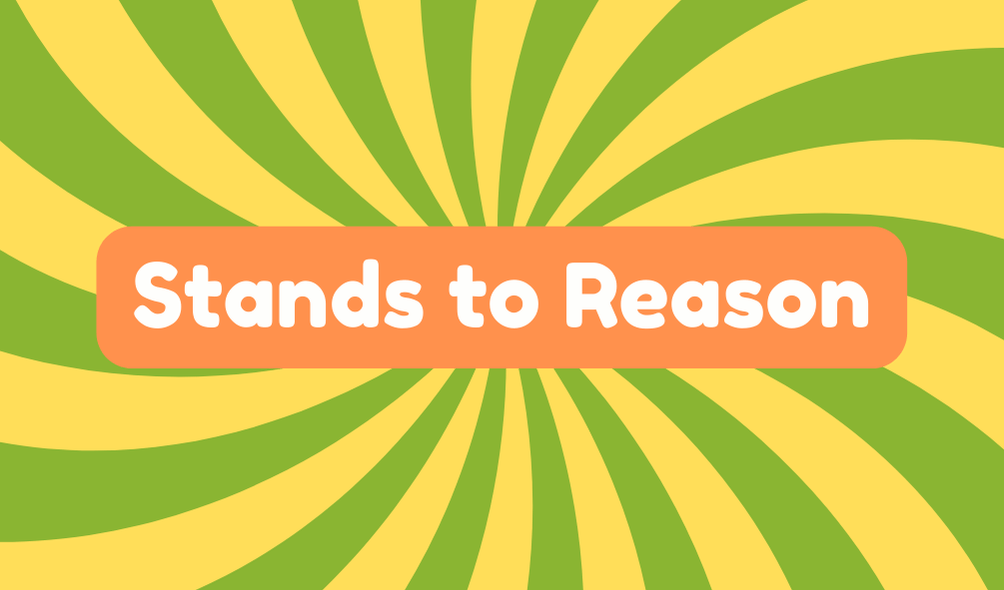The phrase "stands to reason" means that something is logically evident or reasonable. Its origins trace back to the 16th century, highlighting a societal shift towards valuing rational thought. Practical examples show how studying hard leads to better grades or predicting rain suggests carrying an umbrella. The phrase remains relevant as it aids in clear communication about logical conclusions. Encouraging critical thinking, it invites further exploration into the nuances of rational discourse and its applications.
Synonyms
When expressing logical conclusions, a variety of synonyms can help convey similar meanings. Utilizing diverse terminology can enhance communication, particularly in discussions employing reasoning techniques. An innovative approach to language reveals nuances in thought processes. Significantly, several synonyms can replace "stands to reason":
- Makes sense
- Is reasonable
- Follows logically
- Is evident
Example of Sentences
Often, people may overlook the importance of incorporating practical examples when discussing the phrase "stands to reason." These examples serve as clear illustrations of how logical deductions can manifest in everyday situations. Understanding their application can refine one's reasoning skills. Consider these instances:
- It stands to reason that studying diligently leads to better grades.
- If the forecast predicts rain, it stands to reason that one should carry an umbrella.
- After reviewing safety reports, it stands to reason the new procedure will reduce accidents.
- It stands to reason that a balanced diet supports overall health.
Each example reveals how clear conclusions can guide action.
Origin
The origins of the phrase "stands to reason" can be traced back to the 16th century, a time when language was evolving and expressions began to reflect deeper logical thinking. Initially, it referred to obeying reason as a means for logical deductions. This historical evolution shows how society was starting to value rational thought. The phrase encapsulated an emerging recognition that some conclusions were obvious and justified through careful reasoning. Over time, it transformed into a more accessible form, highlighting the importance of clear thought and the interplay of reasoning in everyday discourse, reminding us of the need for critical evaluation in our conclusions.
Collocations
Collocations related to the phrase "stands to reason" reveal how language can shape and influence thought. Exploring collocations with reason further clarifies this concept and promotes critical thinking. Here are four significant examples:
- Reasoned conclusions
- Reasonable expectation
- Reasoned argument
- Sound reasoning
These expressions encapsulate the essence of logical deduction, encouraging individuals to arrive at sound judgments. Engaging with these collocations fosters a deeper understanding of reasoning's role in communication, prompting a reevaluation of what constitutes rational thought. Consequently, recognizing these connections can enrich discussions and aid in making informed decisions in diverse contexts.
How to Use in Everyday Language
Using the phrase "stands to reason" in everyday conversation can enhance communication by articulating logical conclusions. In various everyday scenarios, individuals can express their logical deductions more clearly. For instance, when discussing project timelines or necessary actions, this phrase can frame arguments effectively. It is vital, however, to use it judiciously; overuse may cause the term to lose its impact. Additionally, ensuring the context truly warrants such reasoning helps maintain credibility. Educating oneself on this phrase's proper usage empowers individuals to communicate ideas with clarity and purpose, instilling confidence in their logical assessments while avoiding unnecessary ambiguity.
Why Is It Still Relevant Today?
Why does the phrase "stands to reason" continue to hold relevance in contemporary discourse? In an era of rapid change and complexity, logical thinking serves as a cornerstone for effective decision-making. This phrase encapsulates the essence of practical application; it encourages individuals to draw sensible conclusions based on available information. As society grapples with misinformation and emotional reasoning, the call for clarity and reasoning grows stronger. By invoking this phrase, individuals can promote rational dialogue in innovative discussions, ensuring that conclusions are not only reasonable but also grounded in reality. This relevance underscores the importance of logic in maneuvering modern challenges.







